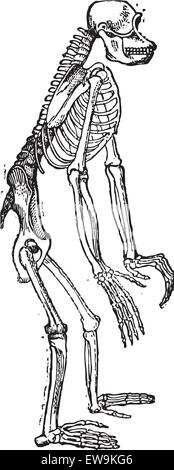

Since at least the 1920s, both anecdotal reports and more controlled experiments have indicated that the strength of a chimpanzee can exceed that of a human ( 6– 12). We propose that the hominin lineage experienced a decline in maximum dynamic force and power output during the past 7–8 million years in response to selection for repetitive, low-cost contractile behavior. Thus, the superior mass-specific muscular performance of chimpanzees does not stem from differences in isometric force-generating capabilities or maximum shortening velocities-as has long been suggested-but rather is due in part to differences in MHC isoform content and fiber length. Computer simulations of species-specific whole-muscle models indicate that maximum dynamic force and power output is 1.35 times higher in a chimpanzee muscle than a human muscle of similar size.

Unlike humans, chimpanzee muscle is composed of ∼67% fast-twitch fibers (MHC IIa+IId). Here, we show that chimpanzee muscle is similar to human muscle in its single-fiber contractile properties, but exhibits a much higher fraction of MHC II isoforms. Hypotheses for the muscular basis of this performance differential have included greater isometric force-generating capabilities, faster maximum shortening velocities, and/or a difference in myosin heavy chain (MHC) isoform content in chimpanzee relative to human skeletal muscle. A mix of anecdotal and more controlled studies provides some support for this view however, a critical review of available data suggests that chimpanzee mass-specific muscular performance is a more modest 1.5 times greater than humans on average. Since at least the 1920s, it has been reported that common chimpanzees ( Pan troglodytes) differ from humans in being capable of exceptional feats of “super strength,” both in the wild and in captive environments.


 0 kommentar(er)
0 kommentar(er)
